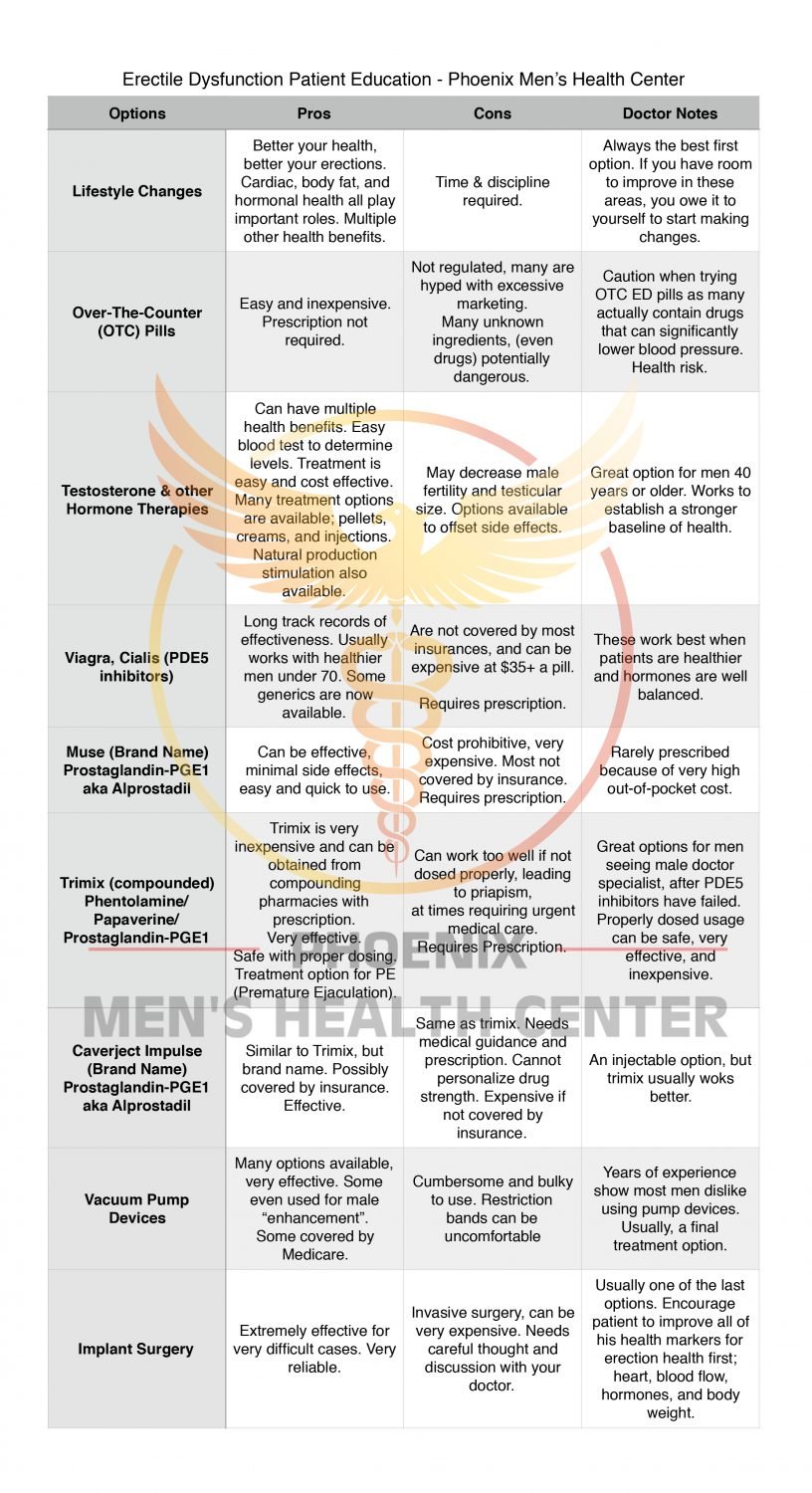As Valentine’s day is coming up, you may be planning for a special night with your special someone. As always, Phoenix Men’s Health Center is here to help you—especially if you are having problems in the bedroom. Erectile dysfunction is the elephant in the room that individuals feel embarrassed to talk about. Many men turn to the internet, where they are frustrated with conflicting answers and information. About
20-30 million men in the US are estimated to be suffering from erectile dysfunction.1
If you or your loved one is having problems achieving and/or maintaining an erection for sex, this article may shed some light on your next steps.
When patients come in to the clinic, we first want to identify whether the cause of the problem is psychological or organic, or a combination of both.
If the problem is mostly psychological, men should still be having nocturnal erections
(2-3 throughout a sleeping episode) and morning erections. If they cannot remember the last time they’ve had a morning erection, an organic issue is more likely. In this case, the first course of action is to draw blood to check on different values that may indicate a problem. We look for hormone levels, blood sugar levels, and cardiac markers because they all affect sexual health.
If your testosterone levels are low, your libido is lost and not enough nitric oxide (principal neurotransmitter that mediates erections) is released, which results in erectile dysfunction.2 In this case, we may recommend bio-identical testosterone therapy, a safe and effective way to increase your testosterone to normal levels. In addition to helping you achieve normal erections, hormone therapy can help you lose weight, increase your cardiovascular health, and give you more energy.
Your risk of erectile dysfunction is increased if you are diabetic (associated with vascular complications) or have cardiovascular problems because erection requires blood flow to the penis.3 Medications for lowering blood pressure usually have erectile dysfunction as side effects. In this case, we can help you make lifestyle changes and natural ways to get the blood sugar in control and help the heart. Lifestyle changes require a lot of discipline and work but can have systemic benefits and improve your overall health.
If none of these three components are problematic and you are still having problems, or if you are still having erectile problems after treating them, then we can move up to prescription drugs or devices. Over-the-counter drugs usually available for purchase at adult stores or online are not recommended options for several reasons. They are mostly combinations of different herbs without any scientific evidence to back up their efficacy. However, over-the-counter drugs that do work likely has generic versions of prescription drugs. In this case, you don’t know what the dosing of the drug is, or what other ingredients are compounded into the drug, which makes it potentially dangerous.
Prescription Viagra, Cialis, Levitra, and Stendra are phosphodiesterase type 5 inhibitors (PDE5), which work by increasing levels of cyclic guanosine monophosphate (cGMP) leading to dilation of blood vessels around the penis and increased blood flow, resulting in an erection.4 Since coming to market in 1998 (Viagra), the PDE5 inhibitors have been widely prescribed and have been used safely and effectively. The catch to PDE5 inhibitors is that the pills are as effective as your health. If your health is affected by cardiovascular issues or diabetes, these pills cannot provide the desired outcomes. Additionally, they are not covered by insurance because they are considered “lifestyle drugs” and can get very expensive quickly.
The next line of treatment (PDE5 inhibitors do not work) is MUSE (alprostadil). MUSE is a little pellet that gets inserted into the urethra of the penis and induces erection through vasodilation. The benefits include absence of systemic effects and higher efficacy than PDE5 inhibitors. However, patients often find it uncomfortable and expensive (also not covered by insurance).
A highly effective method of treatment for erectile dysfunction that works for up to 90% of patients is intercavernous injections of a mixture of papaverine, phentolamine, and alprostadil, called a trimix. Trimix is injected into the base of the penis using an insulin needle before intercourse to induce an erection through vasodilation.
It’s inexpensive, extremely effective, and locally absorbed, which means there are very few systemic side effects.
Trimix can be compounded to be much stronger than other available drugs as needed. This is a good treatment option for patients with diabetes or heart problems that have not been successful with other oral drugs. Because of its high efficacy, it is critical to get it prescribed and dosed through an experienced physician to avoid priapism (erection lasting more than 4 hours).
If oral medications fail and you are squirming at the thought of a suppository or a needle, there are other options available. The penis pump, which creates a vacuum to draw in blood to the penis, is effective and covered by Medicare but cumbersome and uncomfortable. The last line of treatment is surgical implant prostheses that lets the patient push the valve to achieve an erection and release afterwards. This requires surgery and anesthesia, and is only recommended for men not satisfied with or not responding to medical treatments.4
Every case is different as a lot of variables can affect what causes erectile dysfunction. Phoenix Men’s Health Center has extensive experience in this arena and can provide you with excellent quality care and a lasting solution with a priority on treating the cause of the problem. If you are concerned about yourself, or your partner, please contact us at 602-908-5422 or click here to book an appointment with one of our physicians.
References:
- Benet AE, Melman A. The epidemiology of erectile dysfunction. Urology Clinical North America 1995; 22:699-709
- Ignarro LJ, Bush PA, Buga GM, Wood KS, Fukuto JM, Rajfer J. Nitric oxide and cyclic GMP formation upon electrical field stimulation cause relaxation of corpus cavernosum smooth muscle. Biochemical and Biophysical Research Commununications 1990;170:843-50.
- Grover, S. A., Lowensteyn, I., Kaouache, M., Marchand, S., Coupal, L., DeCarolis, E., … & Defoy, I. (2006). The prevalence of erectile dysfunction in the primary care setting: importance of risk factors for diabetes and vascular disease. Archives of Internal Medicine, 166(2), 213-219.
- Lue, T. (2000). Erectile dysfunction. New England Journal of Medicine, 342(24), 1802-1813.


